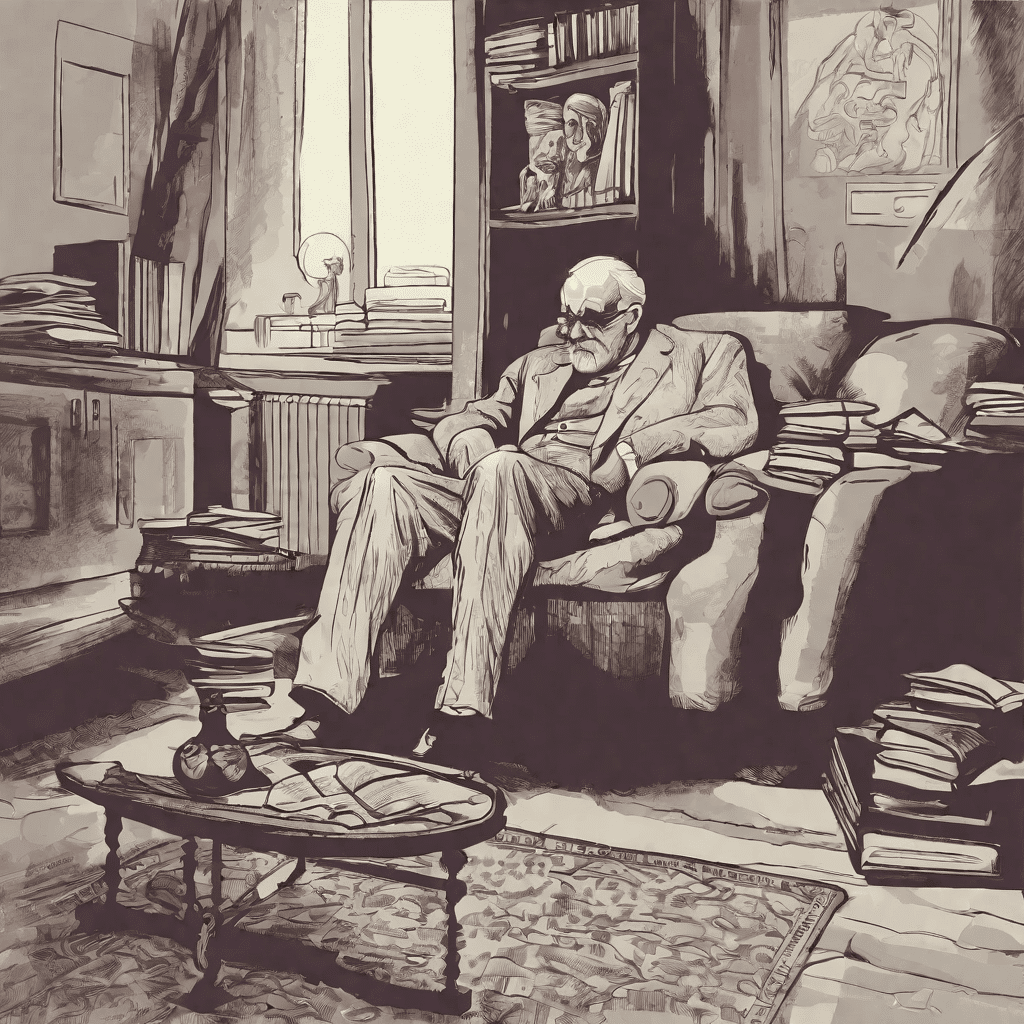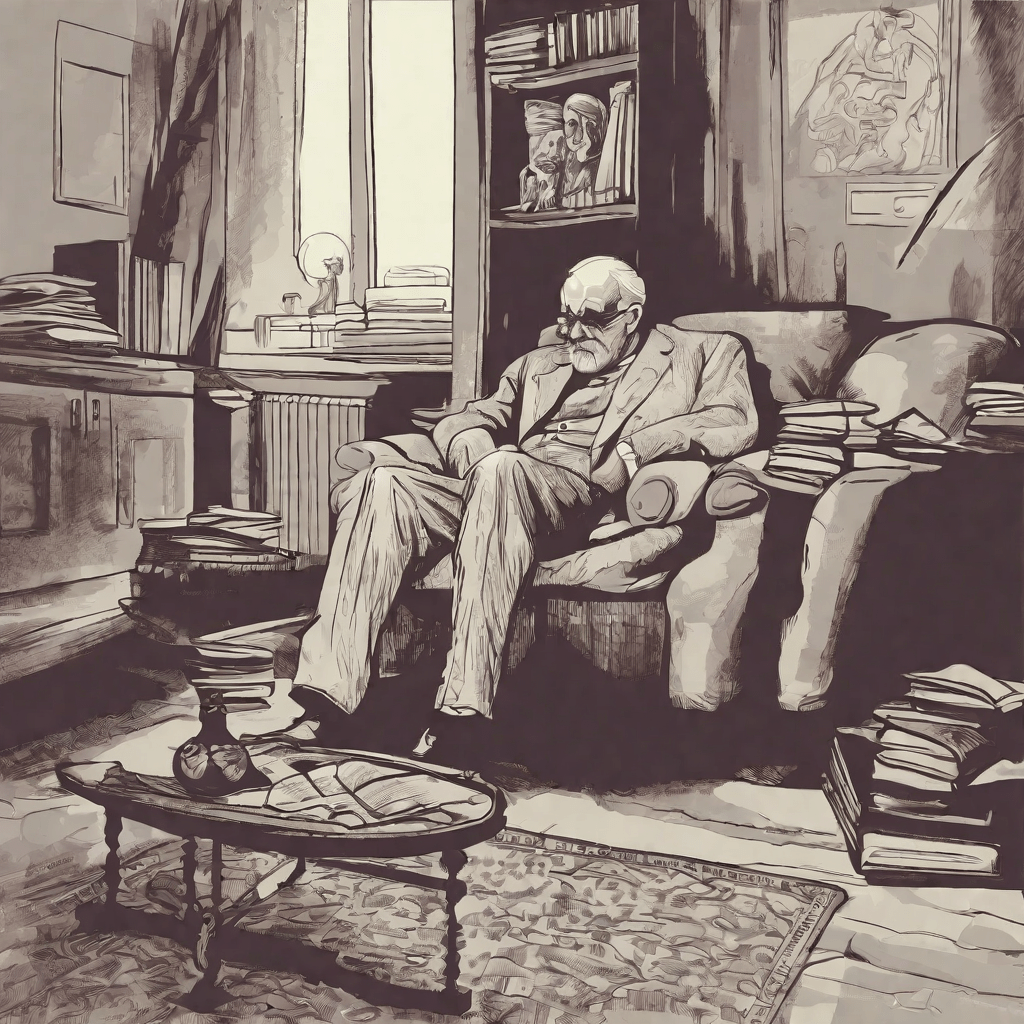
The science of human behavior and mind has been greatly shaped by the influential work of classical psychologists. Among the notable theories that contribute to our understanding of psychology, one stands out significantly: psychoanalysis. This thought-provoking concept, formally conceptualized by Sigmund Freud, has fascinated and baffled psychologists, researchers, and practitioners around the world.
In essence, the realm of psychoanalysis is an exploration into the depth psychology acknowledging the importance of unconscious mind processes. It delves into the realm of the unseen—the unconscious desires, motivations, and conflicts that Freud proposed to drive our actions, thoughts, and feelings. This might intrigue or intimidate, but there is no denying the resonance psychoanalysis has had on the field of psychology and its numerous approaches.
Beyond the walls of a therapist’s office, psychoanalysis, with its ideas about dreams and repression, arouses our intellectual curiosity and taps into our desire to understand the intricacies of the human mind. It branches out to Freudian psychoanalysis that mainlines Freud’s original ideas, the transformative theories of ego psychology which centers upon how the self interacts with reality, and even extends to the existentialist approach to psychoanalysis focusing on choice, freedom, and responsibility.
Just as Freud’s psychosexual development theory brought a revolutionary shift in how we perceive the development of personality, the whole of psychoanalysis continues to be a vibrant, multifaceted field, influencing not just psychology but also aspects of culture, literature, and art. Acknowledging and appreciating the depth of psychoanalysis equips us with the powerful tool of introspection, and an enriched understanding of human nature and behavior.
All elements considered, psychoanalysis quietly lies at the root of much modern psychological thought and practice. It’s imperative on our end to understand the detailed study of psychoanalysis, its genesis, evolution, and the multitude of insights it provides on the functioning of the human mind. Regardless of one’s stance on its principals and hypotheses, psychoanalysis makes us question and delve deeper, enriching our understanding of psychology one introspection at a time.
The Theoretical Framework of Psychoanalysis
Explanation of the Unconscious Mind
Definition and function
Central to psychoanalysis is the monumental concept of the unconscious mind. As the foundation of Freudian Psychoanalysis, the unconscious mind harbors all thoughts, memories, and desires that are outside one’s awareness yet can still significantly influence behavior. Hidden but potent, it is a reservoir of primeval desires, current experiences and the wellspring of creativity. Psychoanalysis paints the picture of the mind as an iceberg, with the unconscious occupying the submerged, larger portion.
Methods of exploring the unconscious mind
The exploration of the unconscious mind is akin to unearthing a treasure. Interpretation of dreams, Free association, and Psychoanalytic treatment all line up as techniques used to delve into this hidden realm. Dream interpretation, for example, is viewed as the royal road to the unconscious. It is a window offering a peek into the unconscious mind, where dreams serve as disguised fulfillments of repressed wishes.
Impact of the unconscious on behavior
The impact of the unconscious on behavior is equally vast. The unconscious influences personality, decision-making processes, and human behavior. Its effects seep into everyday life through slips of the tongue, forgetfulness, and inexplicable emotions. In the light of Depth Psychology, addressing such unconscious influences is imperative for attaining a well-balanced personality and an integrated self.
Discussing Freud’s Structural Model
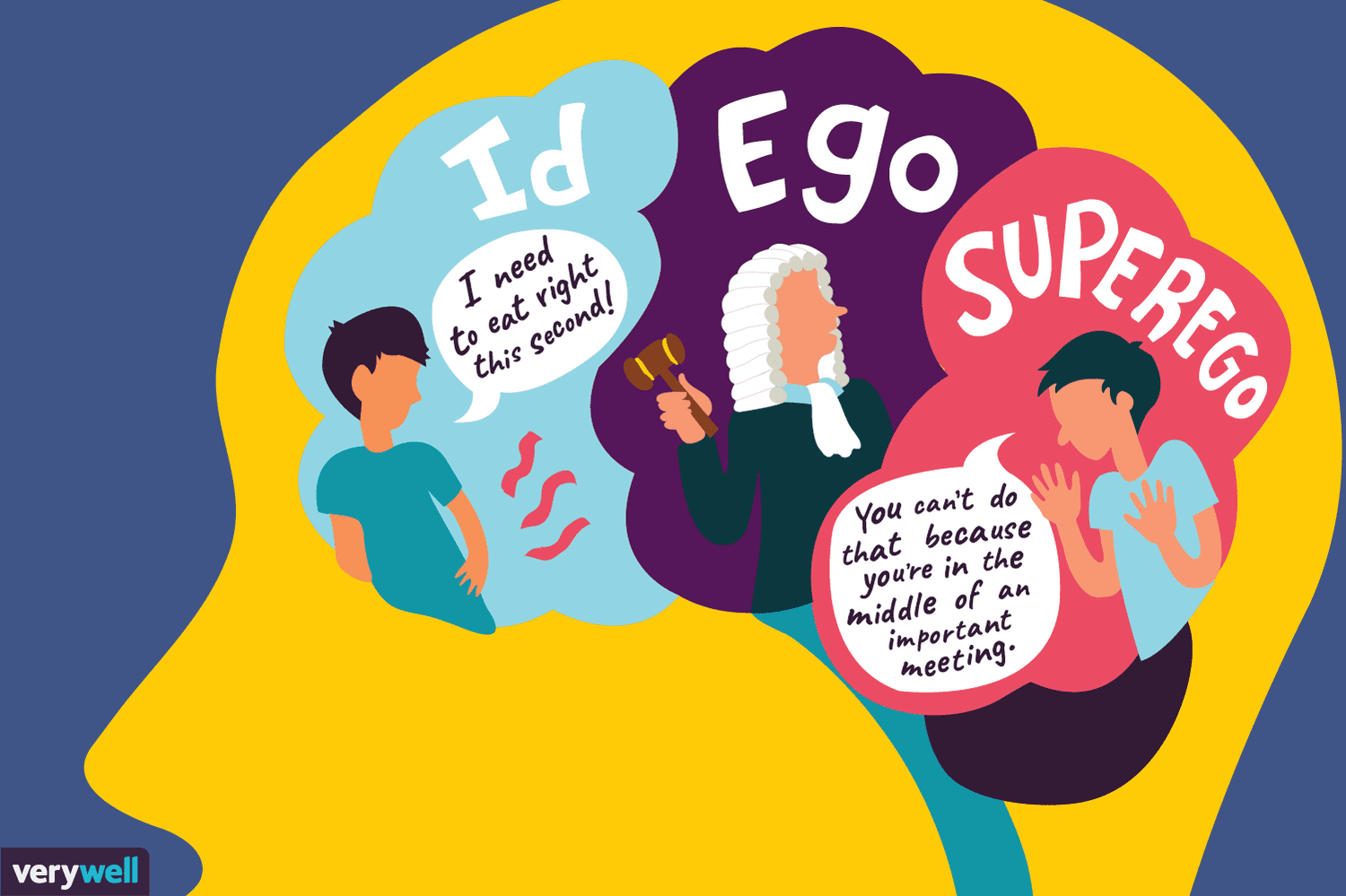
Freud’s conceptualization of the human psyche unfolds into a dynamic and intricate framework known as the structural model. Within this psychological landscape, three distinct entities—the Id, Ego, and Superego—coalesce, shaping the intricacies of an individual’s behavior, decisions, and emotional experiences. This model forms the bedrock of psychoanalytic theory, unraveling the complexities of the human mind.
The Intricate Dance: Balance and Conflicts among Psychic Entities
1. The Id: Pursuit of Pleasure without Consequence
At the core of Freud’s model is the Id, a primal force driven by the pleasure principle. This entity relentlessly seeks instant gratification of desires, heedless of the potential consequences. It embodies the raw, instinctual urges that propel human behavior towards immediate satisfaction, creating a dynamic tension within the psyche.
2. The Superego: Moral Watchdog and Societal Arbiter
In stark contrast, the Superego assumes the role of a moral watchdog, ingrained with societal values and norms. It acts as an internalized authority, striving to uphold ethical standards and moral conduct. The Superego represents the internalization of external moral codes, perpetually influencing choices and actions, often leading to conflicts with the impulsive demands of the Id.
3. The Ego: Diplomat of the Psyche
Caught in the intricate web of conflicting forces is the Ego, guided by the reality principle. Functioning as the mediator, the Ego strives to balance the impulsive desires of the Id, the moral imperatives of the Superego, and the constraints of external reality. It operates with diplomatic finesse, making calculated and reasonable decisions to navigate the intricate terrain of the human psyche.
Reality and morality in Freud’s perspective
In Freud’s nuanced perspective, human behavior emerges from an ongoing struggle between the forces of reality and morality. At the forefront of this psychological drama is Ego psychology, which highlights the pivotal role of a well-functioning Ego in negotiating the intricate interplay of moral compulsions, societal pressures, and instinctual desires.
Ego Psychology Unveiled: The Expert Negotiator
Ego psychology, as envisioned by Freud, places the Ego at the center stage of psychological functioning. A proficient Ego adeptly navigates the delicate balance between the demands of morality, societal expectations, and the primal instincts inherent in human nature. It acts as an expert negotiator, orchestrating a harmonious collaboration between the conflicting forces within the psyche, ensuring not only individual psychological well-being but also facilitating healthy interactions with the external world. In this ongoing negotiation, the Ego emerges as a linchpin for maintaining equilibrium in the intricate tapestry of human consciousness.
Interpretation of Dreams and Symbols
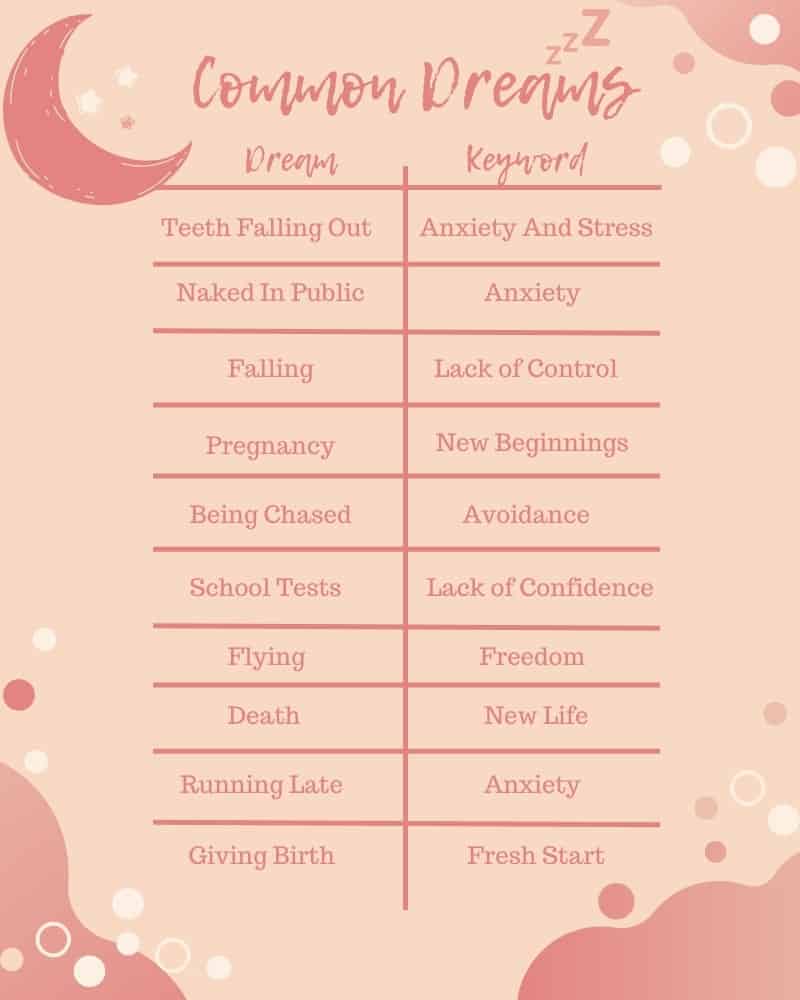
Dream interpretation stands as a pivotal cornerstone in the realm of psychoanalysis, providing a profound portal into the ethereal landscapes of the unconscious mind. Within the mysterious realm of dreams, individuals find a unique connection with their deepest desires and fears, transcending the boundaries of conscious thought. Dreams, far beyond mere sequences of imagery, are considered highly symbolic, with each element harboring a rich tapestry of personal and psychological significance.
Delving into the Symbolic Language: Unraveling the Unconscious
1. Disguised Manifestations: Unveiling Repressed Desires and Conflicts
According to psychoanalytic theory, dreams serve as veiled manifestations of repressed desires, anxieties, and conflicts residing within the recesses of the mind. The process of dream interpretation becomes an intricate dance of decoding and deciphering these symbols, allowing individuals to gain profound insights into the hidden facets of the self. Dreams, in this context, become a symbolic language through which the unconscious communicates with the conscious mind.
2. Symbols as Signposts: Navigating the Unconscious Landscape
Within the enigmatic realm of dreams, symbols emerge as signposts, guiding individuals through the complex terrain of their unconscious mind. These symbols, laden with layers of meaning, serve as keys to unlocking the mysteries of the psyche. A journey through dream symbolism involves unraveling the intricacies of each symbol, shedding light on the deep-seated fears, desires, and unresolved conflicts that shape an individual’s thoughts and behaviors.
A Kaleidoscope of Symbolic Meanings: Examples from the Dreamworld
1. The Theater Seats: Symbolizing Social Standing
Imagine finding yourself in a theater, observing the world from a specific vantage point. In the symbolic language of dreams, the biased seats in a theater may represent one’s perceived place in society. The arrangement of seats becomes a metaphor for social positioning, reflecting the individual’s sense of belonging, acceptance, or exclusion within their social sphere.
2. Turbulent Waters: Embodying Emotional Turmoil
Picture an expansive ocean with turbulent waters, waves crashing against one another. In the dream realm, this powerful image can symbolize emotional turmoil and inner conflict. The tumultuous nature of the ocean mirrors the intensity of one’s emotional experiences, indicating unresolved feelings, internal struggles, or the need for emotional release.
The Depths Explored: Freudian and Jungian Perspectives on Symbols
1. Freudian Psychoanalysis: Unmasking the Subconscious
Within Freudian psychoanalysis, the interpretation of symbols delves into the unconscious mind, uncovering repressed desires and conflicts. Objects, actions, or scenarios within dreams are regarded as symbolic representations of deeper psychological dynamics. For instance, a locked door might symbolize a barrier to self-discovery or repressed memories, inviting exploration and analysis.
2. Jungian Analysis: Archetypes and Collective Symbols
Jungian analysis expands the horizon of dream symbolism by introducing the concept of archetypes and collective symbols. Symbols such as the wise old man, the shadow, or the anima/animus carry universal meanings that transcend individual experiences. Jungian interpretation emphasizes the collective unconscious, suggesting that certain symbols hold shared significance across cultures and civilizations.
Beyond the Dream: A Comprehensive Understanding for Unlocking the Human Mind and Behavior
In the intricate dance of dream interpretation, a comprehensive understanding of symbols, as articulated through Freudian psychoanalysis and Jungian analysis, becomes paramount. The symbolic language of dreams serves as a profound tool for unlocking the mysteries of the human mind and behavior, providing individuals with a transformative journey of self-discovery and introspection. As we navigate the symbolic landscapes of dreams, we unearth the hidden treasures of the unconscious, offering profound insights into the complexities that shape our thoughts, emotions, and actions.
Psychoanalytic Techniques and Methods
The Free Association Technique
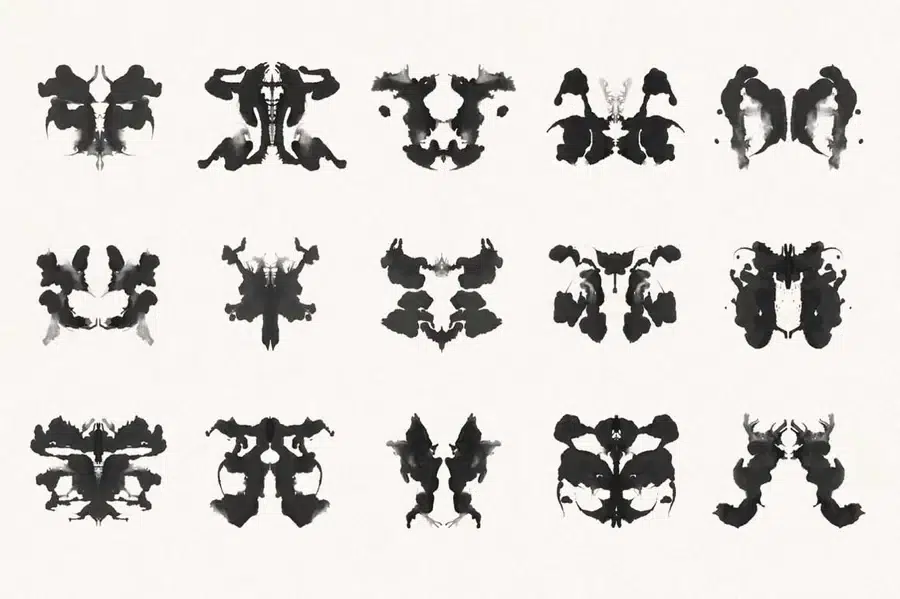
1. Defining the Unfiltered Journey
At the heart of psychoanalysis lies a technique that epitomizes its essence – free association. As a fundamental tool of Freudian Psychoanalysis, free association invites clients to embark on an unfiltered journey into the intricate labyrinth of their minds. This technique hinges on the spontaneous and unedited narration of thoughts, feelings, and memories, providing a direct conduit to the rich tapestry of the unconscious.
2. The Unfolding Process
Free association involves clients expressing their thoughts exactly as they arise, without censorship or conscious control. It is a process that encourages the mind to wander freely, unveiling the uncharted territories of the unconscious. This unscripted exploration allows for the emergence of hidden thoughts and emotions, offering a unique window into the inner workings of the psyche.
Benefits and Challenges: Navigating the Terrain of the Unconscious
1. Excavating the Unconscious: Benefits of Free Association
The potency of free association lies in its capacity to excavate thoughts and emotions that were previously relegated to the recesses of the unconscious mind. By permitting the unrestricted flow of thoughts, individuals gain access to deeply buried memories and emotions. This excavation process becomes a transformative journey, paving the way for profound self-discovery and a nuanced understanding of internal conflicts.
2. The Tightrope Walk: Challenges of Unveiling the Unconscious
However, the unfiltered nature of free association also poses challenges. The technique carries the inherent risk of surfacing distressing, previously unconscious material. The exploration might lead to the unveiling of emotions or memories that were deliberately suppressed, potentially causing discomfort or emotional upheaval for the individual. The therapeutic process, therefore, becomes a delicate tightrope walk, balancing the benefits of discovery with the potential challenges of confronting unsettling material.
Illuminating Effectiveness: Examples of Free Association in Action
1. Office Troubles Unveiling Childhood Memories
Consider a scenario where a client, prompted to express thoughts freely, begins by discussing recent workplace challenges. In the uncharted terrain of free association, the narrative unexpectedly unfolds to reveal repressed childhood memories related to school bullying. This powerful example illustrates how free association can lead individuals from seemingly unrelated thoughts to profound revelations, connecting present-day struggles with long-buried experiences.
2. The Mysterious Unveiling: A Journey into the Unknown
Envision a client navigating the realm of free association, delving into thoughts about daily routines, only to stumble upon repressed emotions linked to a traumatic event. This mysterious unraveling exemplifies the unpredictable yet transformative nature of free association, as it opens doors to unexplored aspects of the psyche, unraveling hidden threads that weave the fabric of an individual’s life.
The Transformative Journey: Free Association in the Tapestry of Psychoanalysis
In the intricate landscape of psychoanalytic techniques, free association emerges as a transformative journey into the depths of the unconscious. The unfiltered exploration of thoughts, feelings, and memories offers a unique and profound therapeutic experience, unlocking hidden recesses of the mind. As individuals traverse the enigmatic terrain of free association, they embark on a journey of self-discovery, confronting the shadows of the unconscious to ultimately foster personal growth and psychological healing.
Technique of Interpretation
The Psychoanalyst as a Decipherer: Unraveling Unconscious Processes
1. A Symphony of Languages
In the intricate realm of psychoanalysis, the technique of interpretation emerges as a powerful tool, transforming the psychoanalyst into a decipherer of psychological enigmas. This intricate dance involves unraveling the complex web of unconscious processes that engulf a client’s thoughts, feelings, and behaviors. At its core, interpretation becomes an art of understanding the subconscious language spoken by clients, a language often veiled in symbols, metaphors, and the subtle slips of Freudian parapraxes.
2. Decoding the Unconscious: Symbols, Metaphors, and Freudian Slips
Psychoanalytic interpretation becomes a nuanced process of decoding the intricate messages embedded in clients’ expressions. The analyst, akin to a linguistic detective, navigates the rich landscape of symbols, metaphors, and Freudian slips to unveil the hidden narratives of the unconscious. Each symbol or slip becomes a piece of a puzzle, offering glimpses into the deeper layers of the psyche.
Detecting Patterns: The Crucial Role in Psychoanalytic Endeavors
1. The Art of Listening: Patterns in Speech and Behavior
A cornerstone of psychoanalytic interpretation lies in the meticulous observation of patterns in clients’ speech and behavior. The psychoanalyst assumes the role of a careful listener, attuned to the recurring themes that emerge in the client’s narrative. These patterns, whether subtle or overt, serve as breadcrumbs pointing towards potential unconscious factors shaping the individual’s experiences.
2. Uncovering the Subtext: Childlike Feelings and Early Experiences
For instance, a persistent theme of helplessness woven into a client’s expressions might signal deeper, childlike feelings rooted in early life experiences. The astute psychoanalyst discerns these recurring motifs, recognizing them as gateways to the unconscious mind. In this interpretive dance, the analyst deciphers the hidden language, unraveling the threads of the client’s psychological tapestry.
A Stepping Stone to Self-Awareness: The Role of Interpretation
1. Illuminating the Unconscious: A Catalyst for Growth
The identification of unconscious factors through interpretation serves as a transformative catalyst for clients. By shedding light on the hidden meanings behind symbols, metaphors, and slips, individuals embark on a journey of deeper self-awareness. Interpretation becomes a guiding light, helping clients navigate the labyrinth of their own psyche, fostering insight into the origins of thoughts and behaviors.
2. Managing Defenses and Tailoring Treatment
Moreover, the revelations gleaned through interpretation aid in the management of psychological defenses. As clients become aware of the unconscious forces at play, they gain the ability to navigate and, in some cases, challenge defense mechanisms that may hinder personal growth. Psychoanalytic treatment, tailored based on these insights, becomes a finely tuned instrument for facilitating meaningful change and fostering psychological well-being.
The Art of Interpretation: A Symphony of Understanding
In the intricate symphony of psychoanalysis, the technique of interpretation emerges as a transformative force. The psychoanalyst, armed with an understanding of clients’ languages, becomes a guide through the labyrinth of the unconscious. Through the discernment of patterns, the unraveling of symbols, and the illumination of hidden meanings, interpretation becomes not only a therapeutic tool but a profound facilitator of self-discovery and growth. As clients engage in this interpretive dance, they traverse the realms of their own psyche, unlocking the mysteries that shape their thoughts, emotions, and the very essence of their being.
Transference and Countertransference
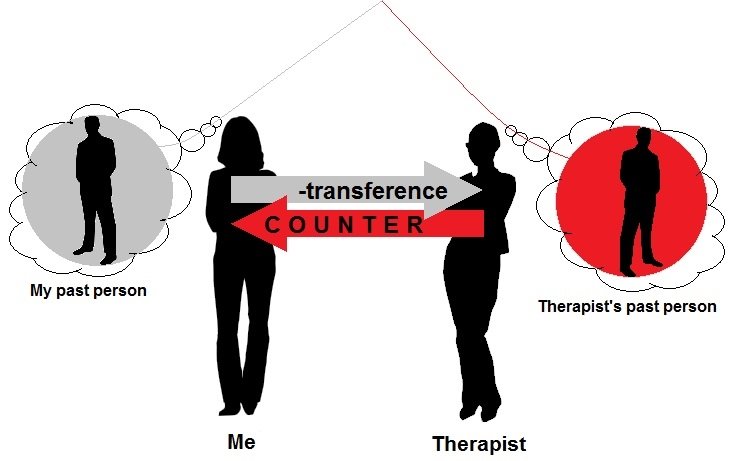
The Dance of Projection: Transference in Psychoanalytic Dynamics
1. Projecting Past Feelings onto the Analyst
Transference, a captivating phenomenon in psychoanalysis, unfolds as clients project feelings or attitudes from their past onto the analyst. This intricate dance involves the client’s subconscious act of viewing the analyst through the lens of past relationships. For instance, a client might unconsciously perceive the therapist as a judgmental authority figure reminiscent of a harsh parent from their formative years.
2. The Therapeutic Challenge: Unveiling Unconscious Patterns
Transference serves as a portal to unconscious patterns, allowing the psychoanalyst to gain insight into the client’s relational dynamics and unresolved conflicts. The therapist becomes a symbolic figure embodying past influences, creating an opportunity for exploration and healing within the therapeutic relationship.
The Reflective Mirror: Countertransference in Psychoanalytic Dynamics
1. The Analyst’s Emotional Response
On the flip side of the psychoanalytic coin is countertransference, an equally intriguing phenomenon. This unfolds as the analyst experiences an emotional response to the client, often mirroring dynamics from their own past. For instance, the analyst might find themselves feeling overprotective towards a client who evokes memories of a younger sibling.
2. Navigating the Emotional Landscape
Countertransference emotions can both aid and impede the therapeutic process. While the analyst’s emotional response can provide valuable insights into the client’s impact, it also poses the risk of personal biases influencing the therapeutic relationship. Skillful navigation of this emotional landscape becomes paramount for maintaining therapeutic integrity.
Mastering the Therapeutic Dance: Effectively Handling Transference and Countertransference
1. Utilizing Emotions for Therapeutic Gain
Effectively managing transference and countertransference is a cornerstone of maintaining the integrity and efficiency of psychoanalytic therapy. The psychoanalyst walks a delicate tightrope, utilizing these emotional currents as tools for therapeutic gain. Transference becomes a doorway to exploring unresolved issues, while countertransference offers insights into the analyst’s personal reactions, contributing to a deeper understanding of the client’s impact.
2. Maintaining Therapeutic Boundaries
Critical to the therapeutic dance is the psychoanalyst’s ability to maintain therapeutic boundaries. Recognizing transference and countertransference as valuable tools of analytic psychology, the analyst must strike a balance, using these emotions to enhance the therapeutic process while safeguarding against potential pitfalls.
Complexity and Intricacy in Analytic Practice: Transference and Countertransference
In the intricate tapestry of psychoanalysis, transference and countertransference underscore the complexity and intricacy inherent in the therapeutic process. These phenomena, far from disruptions, become crucial elements for exploration and growth. As both client and analyst navigate the emotional currents, the therapeutic relationship evolves into a dynamic space for self-discovery, healing, and the unraveling of the profound connections between past and present. Transference and countertransference, when skillfully managed, transform the psychoanalytic journey into a nuanced exploration of the human psyche.
Contemporary Psychoanalysis Approach
Dynamic Shifts: Evolution from Classical Psychoanalysis
1. The Unfolding Journey
The realm of psychoanalytic theory, much like a living organism, has undergone a dynamic evolution, transcending the static confines that marked its inception during the eras of Freud and Jung. The transition from classical Freudian psychoanalysis to contemporary perspectives has witnessed profound shifts and innovations, etched into the discipline’s fabric by influential figures who have reshaped its contours.
2. A Tapestry of Transformations
The journey unfolds as psychoanalysis moves from the rigidity of Freud’s psychosexual development theory to the profound depths of Jungian Analysis. The focus shifts from psychical energy conflicts in Ego Psychology to the expansive approach of Analytic Psychology. This transformation mirrors the adaptability of psychoanalysis, showcasing its ability to incorporate diverse perspectives and embrace the evolving complexities of the human psyche.
Influential Figures: Shaping Contemporary Psychoanalysis
1. Freud to Jung: A Paradigm Shift
In the expansive landscape of psychoanalytic evolution, the contributions of pivotal figures have been monumental. Freud and Jung laid the foundational stones, yet the path diverged as subsequent figures left their indelible marks. The transition from Freud’s singular focus on the unconscious to Jung’s exploration of archetypes marked a paradigm shift, broadening the vistas of psychoanalytic inquiry.
2. Ego Psychology to Analytic Psychology: A Broadening Horizon
The journey continues with significant figures like Erik Erikson, who expanded the scope of Ego Psychology, emphasizing psychosocial development. Concurrently, pioneers like Carl Gustav Jung introduced Analytic Psychology, embracing a broader perspective that delves into the collective unconscious and archetypal symbols. These shifts signal a departure from the narrow confines of early psychoanalytic thought.
Interpersonal Dynamics: A Contemporary Embrace
1. From Instincts to Interpersonal Relations
One of the hallmark transformations in contemporary psychoanalysis is the shift from an exclusive focus on instinctual drives to the acknowledgment of the paramount importance of interpersonal relations. Figures like Harry Stack Sullivan and Heinz Kohut have been instrumental in steering psychoanalysis towards a more relational stance. Their contributions have paved the way for concepts such as “relational psychoanalysis” and “self psychology.”
2. Relational Psychoanalysis and Self Psychology: Expanding Horizons
The emphasis on interpersonal relations in modern psychoanalysis marks a departure from the instinctual focus prevalent in early psychoanalytic thought. Pioneers like Sullivan, with his focus on interpersonal relations, and Kohut, with his emphasis on the development of a healthy self, have broadened the scope of psychoanalysis. “Relational psychoanalysis” explores the impact of relationships on individual development, while “self psychology” delves into the formation and maintenance of a cohesive self.
A Contemporary Tapestry: Beyond the Individual
In the landscape of contemporary psychoanalysis, the discipline transcends its historical boundaries, expanding its scope beyond individual psychic processes. The pioneering contributions of figures like Sullivan and Kohut underscore the significance of formative relationships and the interplay of social dynamics in shaping our psychological lives. This contemporary tapestry, woven with threads of diverse perspectives, reflects the vibrant evolution of psychoanalysis, adapting to the multifaceted nature of the human experience. As the discipline continues to evolve, it embraces the richness of interpersonal relations, offering a more comprehensive understanding of the intricate interplay between the individual and the social milieu.
Differences and Similarities with Classical Approach
Changes in the interpretation of Freud’s concepts
1. A Reconsideration of Freud’s Notions
Contemporary psychoanalysis, while maintaining vital connections with classical theory, has redefined the interpretation of Freud’s foundational concepts. The evolution is particularly evident in the realm of dream interpretation. What was once viewed as the revelation of latent, concealed wishes has transformed into a narrative that conveys implicit relational knowledge. Dreams, in the contemporary context, are seen as a language intricately woven with relational nuances, offering a profound window into the individual’s implicit understanding of relationships.
2. Contextualizing Dream Interpretation
The reinterpretation of dream interpretation signifies a departure from the traditional Freudian lens. It places dreams within the broader context of a language that encapsulates the individual’s relational world, shedding light on the complexities of interpersonal dynamics that shape the unconscious mind.
Shift from Instincts to Relationships: A Seismic Transformation
1. From Drives to Relationships
A seismic shift in focus is palpable when comparing classical psychoanalysis to its contemporary counterpart. Classical theory, deeply rooted in Freud’s emphasis on instinctual drives and internal conflicts, undergoes a profound transformation in contemporary approaches. The pendulum swings from the deterministic forces of innate drives to the nuanced understanding of the role relationships and environmental factors play in shaping the psyche.
2. Reimagining Freudian Drive Theories
The innate Freudian drive theories that once dominated the psychoanalytic landscape have been re-imagined. Contemporary paradigms, such as Object Relations Theory, take center stage, placing interpersonal relationships and external objects at the forefront of our understanding of psychic lives. The individual’s inner world is no longer solely shaped by internal conflicts but is intricately woven with the tapestry of relational experiences.
Harmony of Original Premises and New Discoveries
1. Balancing the Psychoanalytic Equation
Contemporary psychoanalysis strives for a delicate balance between the original premises laid by Freud and the unfolding landscape of new discoveries. It embraces the evolution of concepts, transforming what were once perceived as obstacles into significant therapeutic tools. The concept of countertransference, once viewed as a potential hindrance, is now recognized as a valuable instrument in understanding the intricacies of the therapeutic relationship.
2. The Multifaceted Milieu: A Fusion of Perspectives
Today’s psychoanalysis embodies a multifaceted milieu, incorporating insights from humanistic psychoanalysis, existential psychoanalysis, psychodynamic therapy, and beyond. It operates within a rich tapestry that acknowledges the interconnectedness of an individual’s internal life with broader relational and cultural contexts. This fusion reflects the dynamic evolution of psychoanalysis, seamlessly integrating classical foundations with contemporary perspectives.
A Contemporary Canvas: Bridging Past and Present
In the ever-evolving landscape of psychoanalysis, the contemporary approach emerges as a vibrant canvas that bridges the wisdom of classical foundations with the insights of the present. The reinterpretation of Freudian concepts, the shift from instincts to relationships, and the harmonious integration of original premises with new discoveries showcase the resilience and adaptability of psychoanalysis. It stands as a testament to its enduring relevance, offering a holistic understanding of the human psyche that spans the realms of the unconscious, interpersonal dynamics, and the diverse landscapes of the mind.
Applications and Relevance Today
How contemporary psychoanalysis is practiced
1. Diverse Applications
Contemporary psychoanalysis transcends the confines of therapy rooms, casting a wide net of influence across various domains. Its practice extends beyond individual therapy sessions to impact diverse fields, including child rearing, education, literature, and cultural studies. This expansive reach underscores the adaptability and relevance of psychoanalytic principles in addressing the complex functions of present-day life.
2. Therapeutic Diversity
The practice of contemporary psychoanalysis is marked by a rich tapestry of therapeutic methods. Analytic group therapy, couples therapy, and family therapy have become integral components of its application. This diversification reflects its adaptability to meet the evolving needs of individuals and relationships in the modern landscape.
Effectiveness and Criticisms: Navigating the Psychoanalytic Landscape
1. Targeting Root Causes: Long-Term Benefits
Contemporary psychoanalysis, in its modified form, offers a time-intensive yet effective approach that targets the root causes of psychological disorders. The emphasis on exploring the depths of the unconscious and understanding relational dynamics contributes to long-term therapeutic benefits. The approach stands as a testament to the enduring impact of psychoanalytic principles in fostering profound transformation.
2. The Yin and Yang: Criticisms and Influence
Critics argue about the individual variability, cost, and perceived lack of empirical evidence associated with contemporary psychoanalysis. However, its frequent integration into Cognitive Behavioral therapies speaks to its enduring influence and relevance. The dialectical interplay between effectiveness and criticisms mirrors the dynamism of the psychological landscape, emphasizing the ongoing evolution and adaptation of psychoanalytic principles.
Unraveling Human Behavior: A Quest for Understanding
1. From Past Theories to Current Insights
Contemporary psychoanalysis stands on the shoulders of past theories, continuously refining our understanding of the human psyche. It embodies a relentless pursuit of newer insights, incorporating diverse perspectives and methodologies. Learning from the rich legacy of Freud, Jung, and other pioneers, contemporary psychoanalysis remains at the forefront of unraveling the hidden corners of human behavior.
2. Individual and Societal Impact
The practice of contemporary psychoanalysis extends its influence beyond the individual, contributing to a broader societal understanding. It addresses not only personal psychological struggles but also the intricacies of interpersonal relationships and the cultural fabric of society. This multifaceted impact reflects the comprehensive nature of psychoanalytic exploration.
The Ongoing Expedition: Complexity and Rewards
In the intricate landscape of contemporary psychoanalysis, the ongoing expedition to understand human behavior unfolds as a complex yet rewarding endeavor. The approach, with its diverse applications and nuanced therapeutic methods, navigates the complexities of present-day life. It embraces criticism with resilience and adapts to changing landscapes, cementing its relevance in the ever-evolving field of psychology. The quest to unravel the hidden corners of the human psyche persists, echoing the timeless curiosity that defines the essence of psychoanalysis..
The Last Word
Psychoanalysis, a discipline born in the clinical setting with Sigmund Freud’s work over a century ago, has blossomed into an all-encompassing theory of human behavior, emotion and thought. It provided us with the unprecedented understanding of the human mind, drawing a picture much more complex and intricate than our previously held notions.
From exploring the depths of the unconscious mind, employing the introspective technique of free association, to the interpretation of dreams and symbols, we have tried to comprehensively understand the psychoanalytic theory. We ventured into the realm of the Id, Ego, and Superego, well-trodden territories of psychoanalytic thought essential to understanding the human psyche and our constant struggle between desire, morality, and reality.
Transitioning from classical psychoanalysis to the wider perspective of contemporary psychoanalysis, we observed paradigm shifts in approaches as well as in focus. While not disregarding the significance of instinctual drives, contemporary approaches spotlight the impact of interpersonal relationships, creating a multifaceted evaluation approach that adjusts to the complexity of human nature.
Psychoanalysis continues to play a pivotal role in our quest to comprehend the human condition. As we seek resolutions to our problems, psychoanalysis, with its therapeutic methods and introspective methodologies, aids us not merely to navigate our mental trials, but also to perceive ourselves and the world around us with a greater depth of understanding.
Despite criticisms and alternatives, the zeitgeist of psychoanalysis remains. The exploration of the human mind is a continuous journey and our understanding evolves over time. As long as humans seek answers to their internal conflicts and external complexities, the realm of psychoanalysis will continue to broaden and deepen, just as the human psyche it seeks to understand.

